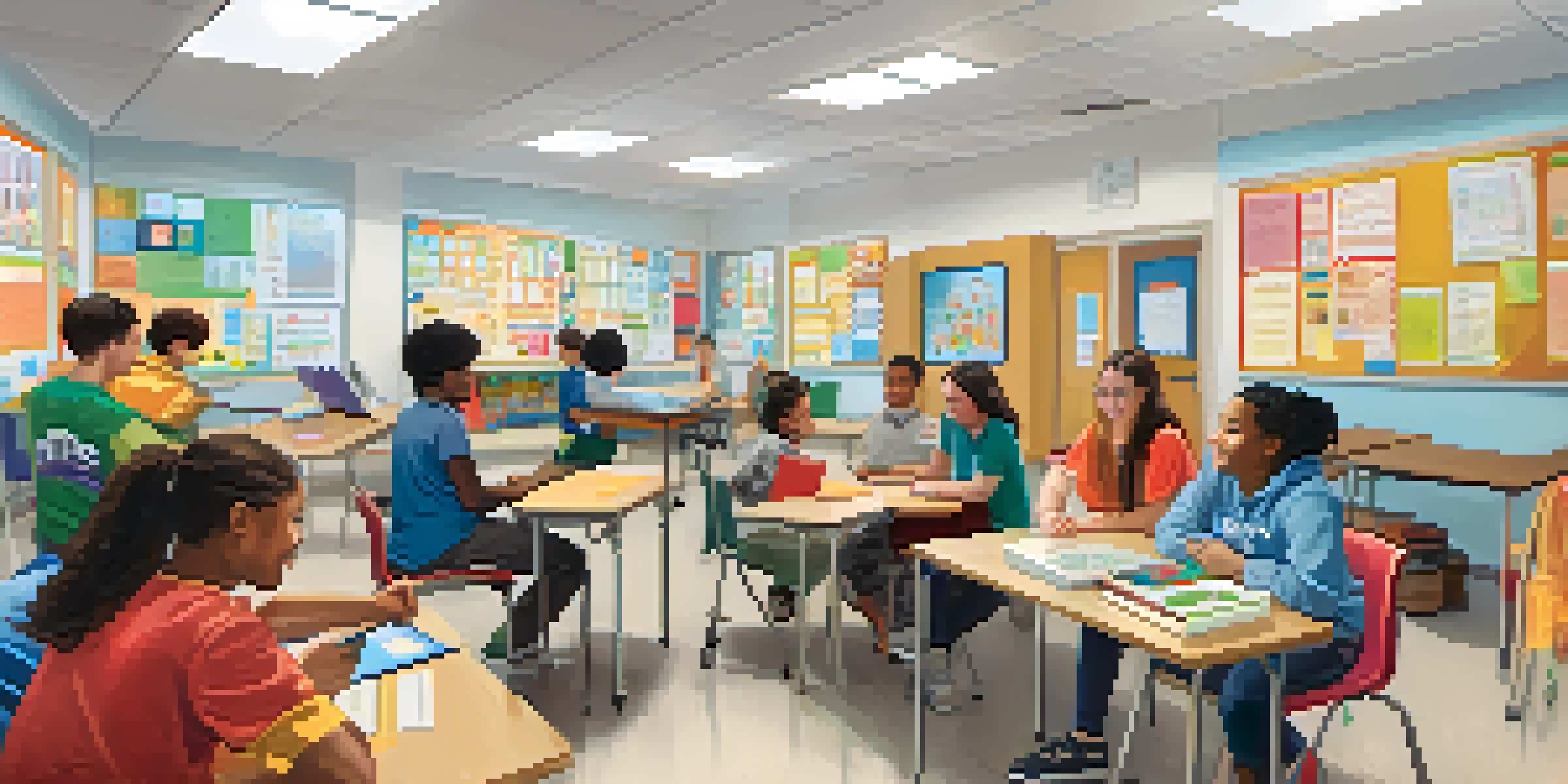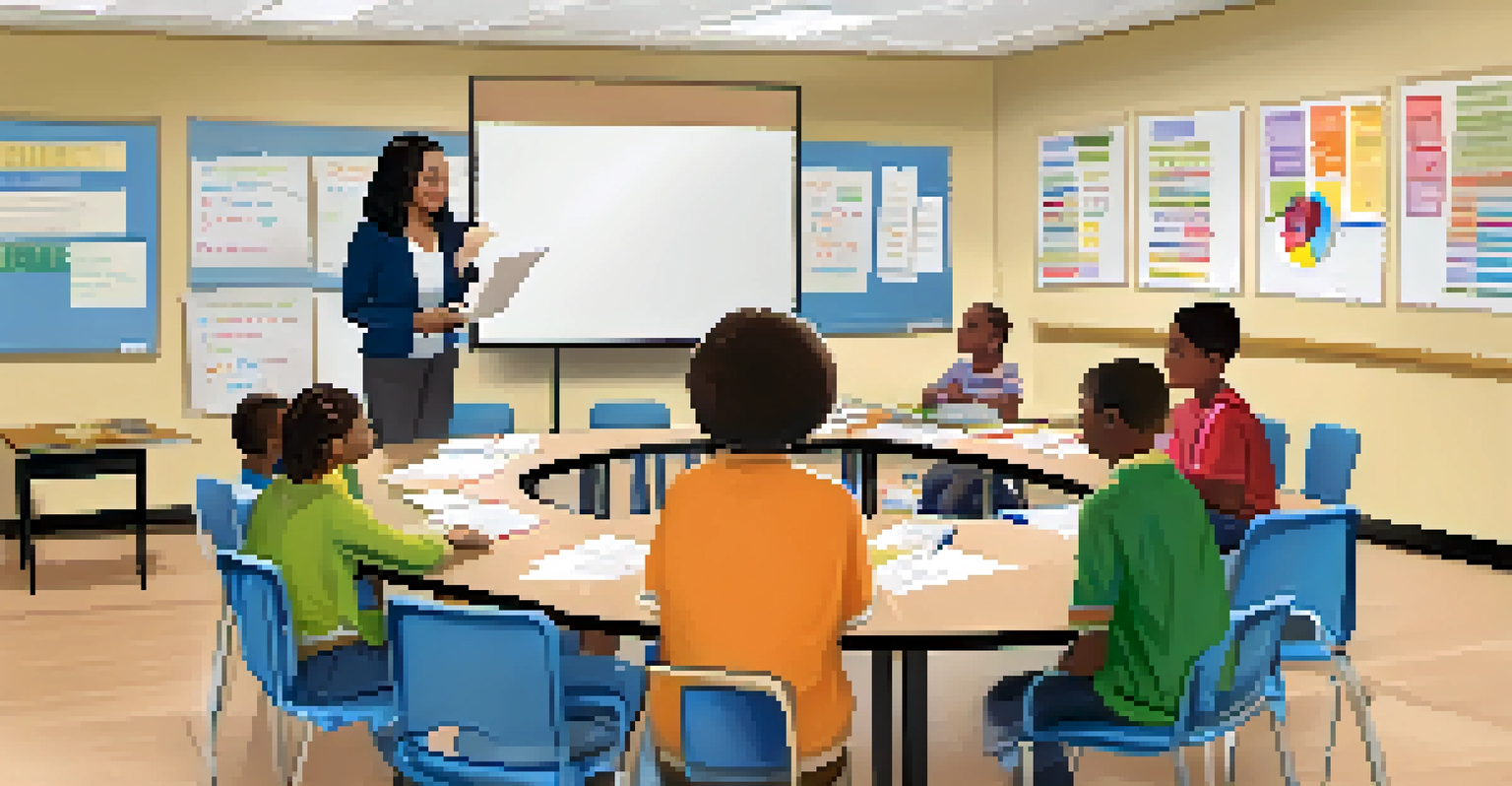Special Education Services in Utah's Public Schools Explained

What Are Special Education Services in Utah?
Special education services in Utah provide tailored support for students with disabilities, ensuring they have access to a free and appropriate public education. These services cater to a wide range of needs, from learning disabilities to more severe conditions. The goal is to help students thrive academically and socially within their school environment.
The function of education is to teach one to think intensively and to think critically. Intelligence plus character – that is the goal of true education.
In practice, this means that schools work closely with families to develop an Individualized Education Program (IEP) for each eligible student. This plan outlines specific educational goals, accommodations, and the services necessary to support the student's learning. By focusing on individual needs, schools aim to create a more inclusive environment.
Ultimately, special education services are designed to empower students, allowing them to reach their full potential. Whether it's through specialized instruction, therapy, or adaptive technology, these resources are crucial for fostering success in school and beyond.
Eligibility Criteria for Special Education Services
Determining eligibility for special education services in Utah involves a comprehensive evaluation process. This assessment typically includes input from parents, teachers, and specialists to identify the specific needs of the child. The evaluation will look at academic performance, social skills, and overall development to see if the child meets the criteria set by federal and state regulations.

In Utah, a child must have a documented disability that adversely affects their educational performance. Disabilities can range from learning disorders, autism, and speech impairments to emotional disturbances and physical disabilities. It’s important for parents to collaborate with school professionals to navigate this process effectively.
Tailored Support for Students
Utah's special education services provide customized support to ensure students with disabilities receive a free and appropriate education.
Once a child is deemed eligible, the IEP team creates a tailored plan that details the specific services and accommodations needed. This ensures that every child's unique challenges are addressed, paving the way for better educational outcomes.
The Role of Individualized Education Programs (IEPs)
An Individualized Education Program (IEP) is a vital document in special education, serving as a roadmap for a child's educational journey. It outlines personalized goals, services, and accommodations tailored to meet the student's unique needs. The IEP is developed collaboratively by a team, including educators, parents, and specialists, ensuring that all perspectives are considered.
Inclusion is not a matter of political correctness. It is the key to growth.
The IEP is not a static document; it is reviewed and updated regularly to reflect the child's progress and changing needs. Meetings are typically held annually, but they can occur more frequently if necessary. This flexibility allows for adjustments to be made, ensuring that the student continues to receive the appropriate support throughout their education.
Additionally, the IEP serves as a communication tool between parents and schools, fostering a partnership that is essential for the child's success. By working together, families and educators can create a supportive environment that encourages growth and learning.
Types of Services Offered in Utah Schools
Utah's public schools offer a variety of services designed to support students with special needs. These services can include specialized instruction, speech and language therapy, occupational therapy, and behavioral interventions. Each service is aimed at addressing specific challenges that a student may face, enhancing their ability to learn and engage in the classroom.
In addition to these therapies, schools also provide accommodations, such as modified assignments, extra time on tests, and access to assistive technology. These tools help level the playing field, ensuring that students can participate fully in their education alongside their peers. It’s all about making learning accessible for everyone.
Individualized Education Programs
IEPs are essential documents that outline personalized goals and services for students, helping to track their progress and adjust support as needed.
Furthermore, schools often collaborate with outside agencies to provide additional resources, such as counseling or health services. This holistic approach ensures that the social, emotional, and academic needs of students are met comprehensively.
Inclusion in the Classroom: What It Means
Inclusion refers to the practice of integrating students with disabilities into general education classrooms. This approach fosters a sense of belonging and encourages interaction with peers, which can significantly enhance social skills and self-esteem. In Utah, inclusion is a guiding principle within special education services, aiming to create diverse and supportive learning environments.
Teachers play a crucial role in making inclusion successful. They receive training on how to adapt lessons and strategies to meet the needs of all students, ensuring that everyone has the opportunity to participate. This might involve co-teaching models, where general and special education teachers work together to support diverse learners.
The benefits of inclusion extend beyond the classroom. When students with disabilities learn alongside their peers, it promotes empathy and understanding, helping to break down stereotypes. This collaborative atmosphere fosters a community where all students can thrive together.
Parental Involvement in Special Education
Parental involvement is key to the success of special education services in Utah. Parents are not just participants in the process; they are vital advocates for their child's education. Their insights and first-hand knowledge of their child's needs help shape the IEP and determine the best support strategies.
Schools encourage parents to actively engage in meetings and discussions about their child's progress. This collaboration builds a strong partnership that can significantly impact the child's educational experience. When parents and educators work together, they can create a more cohesive support system.
Parental Involvement is Crucial
Active participation of parents in the special education process significantly enhances the effectiveness of support for their child's educational needs.
Moreover, parents can access resources and support groups that provide valuable information and encouragement. Being part of a community of other parents facing similar challenges can help alleviate feelings of isolation, empowering families to better navigate the special education landscape.
Transition Services: Preparing for the Future
Transition services are an essential component of special education, aimed at preparing students for life after high school. This process begins in Utah at age 14 and focuses on helping students develop the skills they need for post-secondary education, employment, and independent living. The goal is to ensure a smooth transition into adulthood.
The IEP team collaborates with the student to identify goals and the necessary steps to achieve them. This might include job shadowing, vocational training, or life skills courses. By focusing on real-world applications, schools can help students build confidence and competence as they prepare for the future.

Importantly, families play a critical role in this transition process. By staying informed and involved, parents can help their children explore opportunities and advocate for the resources they need to succeed in adulthood. Transition planning is about empowering students to take charge of their lives and pursue their dreams.